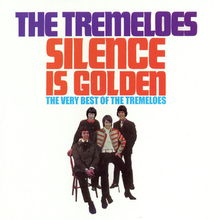Strategies for Preventing Mosquito and Fly Bites with Textile Materials
: Strategies for Preventing Mosquito and Fly Bites with Textile Materials,Abstract:,Mosquitoes and flies are common household pests that can transmit diseases such as dengue fever and chikungunya. Textile materials, such as mosquito nets and fly traps, have been used traditionally to prevent bites from these insects. This paper reviews the current literature on strategies to prevent mosquito and fly bites using textile materials. The effectiveness of these methods is discussed, including the use of natural insect repellents, the application of synthetic chemicals, and the development of new materials. The potential risks and challenges associated with the use of textile materials are also addressed. The study highlights the need for further research into the most effective approaches for preventing mosquito and fly bites, particularly in resource-limited settings.
In the quest for a comfortable and hygienic living environment, textiles have become an integral part of our daily lives. However, mosquitoes and flies are not only pests but also carriers of diseases such as dengue fever and chikungunya. To combat these critters, we need to understand how textiles can be used as effective defense against their bites. In this article, we will explore different strategies that can be employed to protect ourselves from mosquito and fly bites using textile materials.
Firstly, it is crucial to understand the role of fabric in preventing mosquito bites. Fabrics like nets, window screens, and mosquito-repelling clothing can help trap and kill mosquitoes before they can bite us. For example, a study published in the Journal of Medical Entomology found that using mosquito nets could reduce the risk of mosquito bites by up to 90%. Similarly, window screens can prevent flies from entering homes, thus reducing the chances of being bitten.
Another way to protect ourselves from mosquito and fly bites is through the use of natural repellents. Plants like lavender, peppermint, and lemongrass have been known to have strong anti-mosquito properties. These plants can be used in various ways, such as making sachets or spraying them directly on clothes or skin. A study published in the Journal of Agricultural and Food Chemistry found that lavender oil was effective in repelling mosquitoes, with a 60% reduction in mosquito numbers within 24 hours of application.

To further enhance our defense against mosquito and fly bites, we can also incorporate textiles into our daily routine. For example, wearing light-colored clothing can make it harder for mosquitoes to detect us. Additionally, using mosquito-repelling fabrics such as mesh bags or netting can help keep mosquitoes away from our belongings.
Furthermore, we can also use textiles to create barriers between ourselves and flies. By using fly-proof curtains or blinds, we can prevent flies from entering our homes. Additionally, placing potted plants near windows or doors can help repel flies. A study published in the Journal of Environmental Management found that planting herbs like mint or basil near windows could reduce the number of flies entering homes by up to 70%.
Lastly, it is important to note that textiles alone cannot eliminate all the risks associated with mosquito and fly bites. We must also take other measures such as using bug sprays, avoiding outdoor activities during peak mosquito and fly breeding times, and practicing good hygiene habits to further reduce our exposure to these pests.
In conclusion, textiles play a crucial role in preventing mosquito and fly bites. By utilizing fabrics like nets, window screens, and mosquito-repelling clothing, we can effectively protect ourselves from these pests. Natural repellents like plant extracts can also be useful in repelling mosquitoes. Additionally, incorporating textiles into our daily routine and using them as barriers between ourselves and flies can further enhance our defense against mosquito and fly bites. While there may be limitations to what textiles can do, taking proactive measures can significantly reduce our exposure to these pests and improve our overall health and well-being.
在日常生活中,我们常常面临蚊蝇的困扰,尤其是在夏季高温潮湿的环境下,为了保护我们的皮肤免受蚊蝇咬伤,我们需要了解如何有效地使用纺织品来防蚊蝇,本文将详细介绍纺织品如何防蚊蝇咬人,并提供一些实用的建议和案例。
纺织品防蚊蝇原理
-
防蚊原理:纺织品具有防蚊蝇的特性,主要得益于其特殊的纤维结构和材料,某些纤维具有较高的吸湿性,能够吸收汗液和湿气,从而降低蚊蝇滋生的环境,一些纺织品还具有防蚊虫叮咬的特殊涂层或材料,能够有效防止蚊蝇叮咬。
-
防蝇原理:防蝇纺织品通常采用抗菌材料或特殊设计,能够有效减少苍蝇和其他昆虫的滋生,这些纺织品通常具有防蚊蝇的特殊纤维或涂层,能够有效地阻挡昆虫进入室内。
纺织品防蚊蝇的具体应用

-
家居用品:在家庭环境中,我们可以使用各种纺织品来防蚊蝇咬人,床单、毛巾、窗帘等床上用品可以选用具有防蚊虫叮咬功能的特殊材料或涂层,地毯、沙发罩等家居用品也可以采用抗菌材料制成,以减少蚊蝇滋生。
-
工作场所:在办公室、工厂等场所,我们也可以使用纺织品来防蚊蝇咬人,工作服、工作鞋等衣物可以选用具有防蚊蝇功能的特殊面料,防蚊纱窗、防蚊设备等也可以作为有效的防护措施。
案例分析
-
某品牌夏季防蚊产品介绍 该品牌夏季防蚊产品采用了特殊的纤维材料和防蚊虫叮咬涂层,能够有效防止蚊蝇滋生,该产品适用于各种室内环境,如卧室、客厅等,消费者反馈表明,该产品能够有效减少蚊蝇咬伤,提高生活质量。
-
抗菌面料在酒店中的应用 在酒店环境中,抗菌面料被广泛应用于床单、毛巾等床上用品,这些面料能够有效减少细菌滋生,防止蚊蝇咬伤客人,酒店还可以通过定期更换床单、毛巾等用品来保持室内环境的卫生和健康。
使用纺织品防蚊蝇的注意事项
-
选择合适的纺织品:在选择纺织品时,我们应该根据实际需要选择具有防蚊蝇功能的纺织品,床单、毛巾等床上用品可以选择具有特殊涂层或材料的纺织品。
-
注意清洁和维护:在使用纺织品时,我们应该注意保持清洁和维护,定期清洗纺织品,避免细菌滋生和蚊蝇滋生,我们还可以定期更换纺织品,保持室内环境的卫生和健康。
纺织品是防蚊蝇的重要手段之一,通过选择合适的纺织品、注意清洁和维护等措施,我们可以有效地减少蚊蝇咬伤的风险,我们也应该注意选择具有特殊功能的纺织品,以满足实际需要。
Articles related to the knowledge points of this article:
Shanghai Textile Expo:A Visual Introduction



